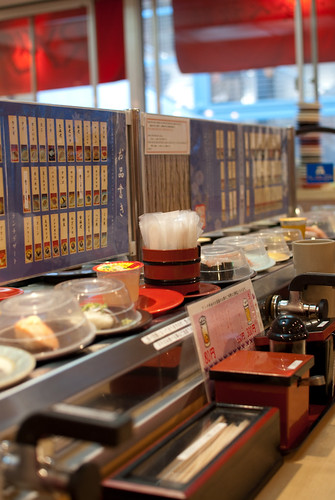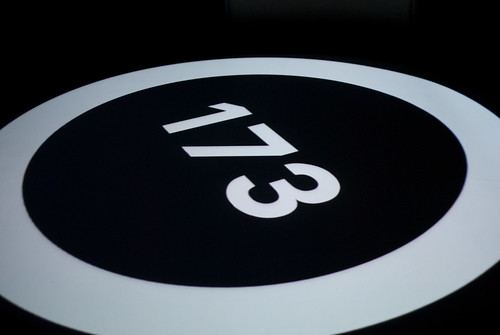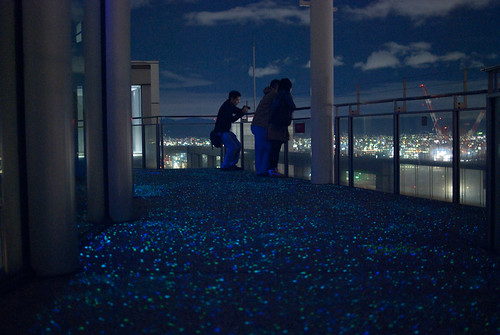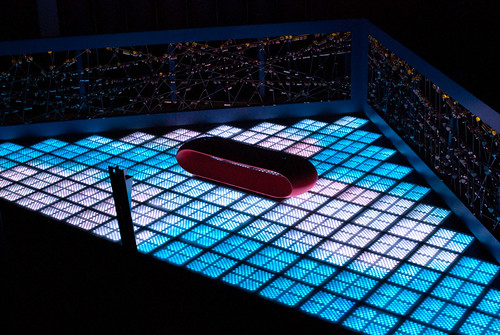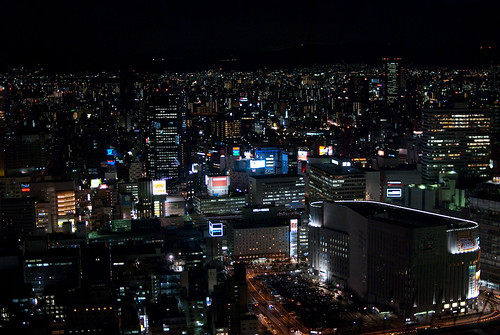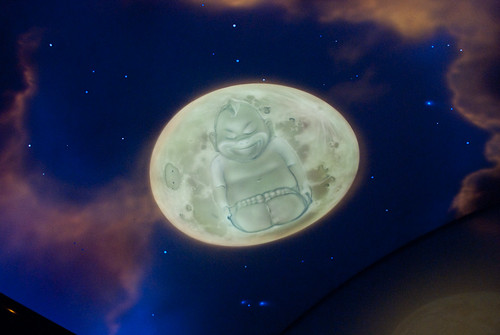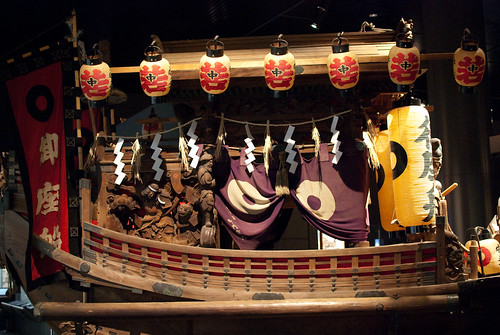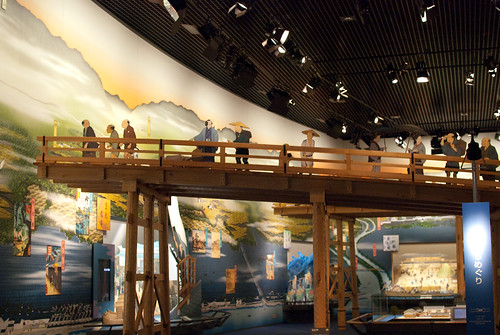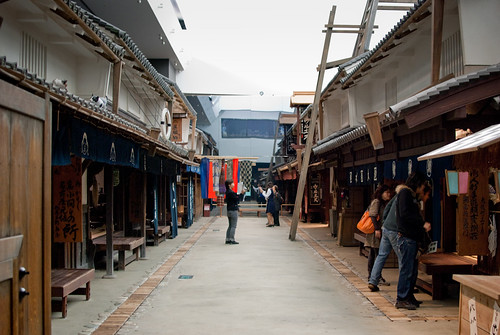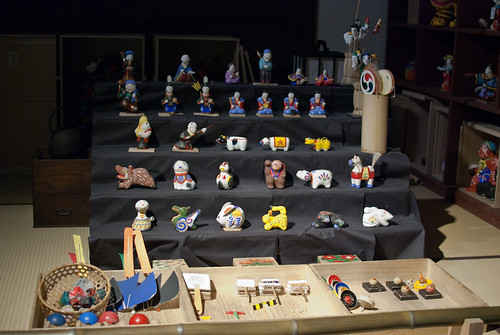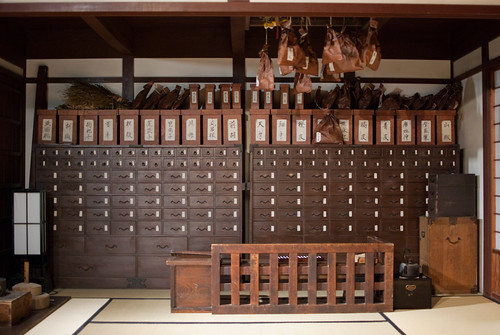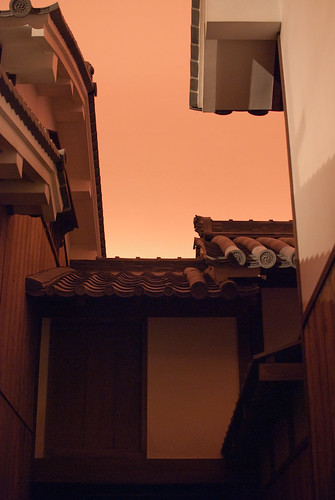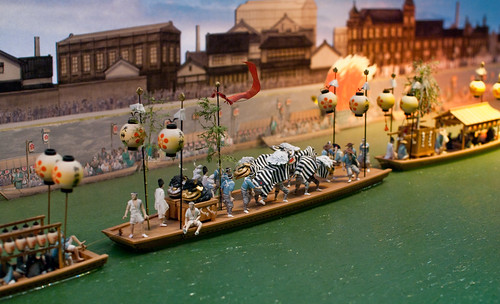We walked down the Senbai [船場] section of Shinsaibashi [心齋橋], south towards the main Shinsaibashi-suji [心齋橋筋] stretch with the major shops. The Senbai section felt more like the local neighbourhood shopping arcade. We walked 3 blocks south and realized that we weren't all that far away from the Hearton Hotel in Shinsaibashi. We could have literally rolled our luggage with relative ease from the hotel to the guesthouse the day before. That would have saved hundreds of dollars in post-Japan physio on H's back.
H's first order of the day was to find breakfast. N just wanted to shop until lunchtime. It wasn't early enough to qualify this meal as breakfast, but it was also obviously not late enough in the day to have all the shops open. H was really getting "hangry" so N picked a McDonald's in Shinsaibashi-suji. Unfortunately, we just missed the breakfast menu by 5 minutes. H ordered a Ebi Filet burger. Think Filet-o-Shrimp. H took a coffee with his meal, but he felt the Canadian coffee tasted better.
After the quick meal, we walked out to the 24 hour Tsutaya bookstore just tucked behind all the famous, currently unlit, neon signs right on the other side of the Dontobori Bridge. Just as in North America, this bookstore is complete with Starbucks. Eat your heart out Chapters.
This is when H had a sudden No. 2 calling, if you know what I mean. Don't you just hate it when you travel and you desperately need a toilet. Grr. N remained in the bookstore while H searched out an appropriate WC. H remembered that there was a public toilet just by the Dotonbori [道噸堀] Bridge. So he stepped out over there and was about to go in when he spotted a disgusting mess. He didn't even have to get that close to the toilet to see it. There was no way he was going in. So he ran back to the McDonald's to see use their toilet. The one toilet there was occupied. Just wait a few minutes and it should become free, right? The guy was in their for 10 minutes. He must have reading the newspaper or the most recent copy of a "cream" mag. 10 friggin' minutes. H was starting to hop up and down at this point. He ran back to Tsutaya and realized that there was directory near the escalators that revealed a men's WC on the 3/F. Relief!! How do you say that in Japanese?!
 |
| from the room of Danny Choo |
After this runaround Shinsaibashi-suji, H rejoined N in the Tsutaya bookstore. H came across a copy of Otacool. He follows a blog by Danny Choo, who was the brainchild behind this book on otaku and their otaku rooms from around the world. Being in Japan, buying a Japanese book is over 50% cheaper than buying it back in Vancouver. So H instantly lapped up the book.
We walked back up north to Nagahori-dori to the Tokyu Hands department store. It's a very popular department store in Japan. It has also a very large DIY and crafts section in the store that attracted N's interest. We bought some items that would be very hard-to-find in Canada. We figured that if you even found the same item in Canada, it would be
After grabbing a few more souvenirs at various shops, it was time to go get some grub again. There was sushi place that we had passed. You can't miss the place because it has a giant dragon wrapped around a large red sphere hanging up as their logo. We decided to partake in what they had to offer. This place was one of those classic conveyor belt sushi places. It was mid-afternoon and well after lunch, so we got a seat right away.
They had tea on tap in this place too. Just get your cup and press it against the button. Voila! Hot tea pours right out on demand. You've gotta love that cause you can never have enough tea in a restaurant. No need to ask the server for a refill. Awesome.
Used to think that conveyor belt sushi would only have sushi, but this place had their desserts, napkins and other stuff on the belt. So if you wanted to take dessert early, there would be no issue. Or if you needed extra napkins, just pick it off the belt. There's even dessert spoons in a little cup that come around from time to time. Just hope the people before don't pinch it before it gets to you. Otherwise, you'd have to wait until the next round of goodies.
There was some more traditional sushi, but there were also some strange ones. The one is black pepper meat was not my favourite. Some things are best not served with rice and seaweed. In the end, we did pretty well and demolished at least 20 tiny dishes of sushi and dessert. The proof was in our stack of plates at the end. Unlike most conveyor belt sushi places, this place did not charge by the plate. It was all you can eat for under ¥1,000. That was a deal in a major tourist and shopping district. I wonder if that was the happy hour price?
Our feet were already pretty pooped from days and days of walking. So we headed back to the guesthouse to rest and pack up our belongings. Back there, we borrowed the guesthouse owner's one computer to look for a large onsen in Osaka that was recommended by one of N's Hong Kong friends. Her friend had actually been there and posted her photos of the place on Facebook. So we had to go check it out. N found the name, address, and directions. We had our evening plans laid out for some good old Japanese R & R.



